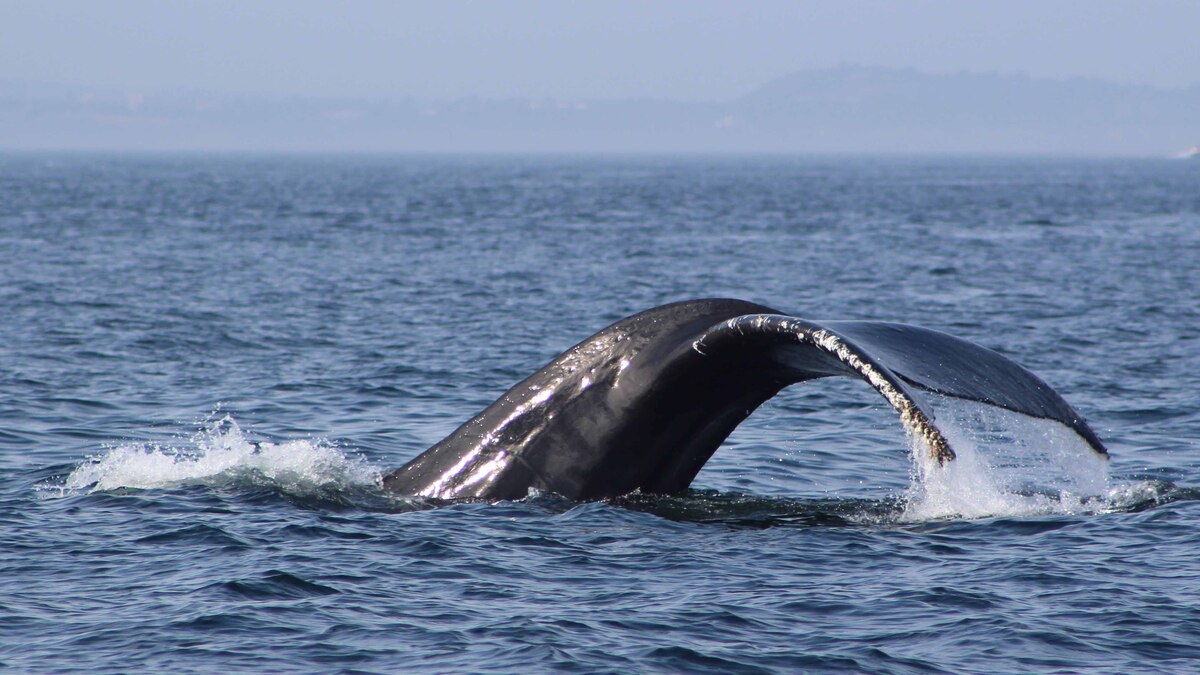Published:

Dr Lauren McWhinnie from Heriot-Watt's Institute of Life and Earth Sciences contributed to a new study investigating the nature and extent of whale entanglements in Scottish fishing gear.
The report identifies potential solutions to avoid and reduce such entanglements in the future.
Dr McWhinnie was working with the Scottish Entanglement Alliance (SEA), which brought together the government, academia, NGOs and the fishing industry.
Revealing the scale of entanglements
Whales and other marine animals can become entangled in fishing equipment, including the ropes linking creels, also known as pots, which are set around Scotland's coasts to catch prawns, crabs and lobsters. If whales become entangled they often cannot escape, which can lead to injury and even death.
The study, published in Endangered Species Research estimated that in Scottish waters approximately six humpback whales and 30 minke whales become entangled in creel fishing ropes each year.
Dr Lauren McWhinnie said: “Entanglement is the largest identified cause of death due to human activity for minke and humpback whales in Scottish waters.
“There have also been reports of basking sharks and dolphins becoming entangled.
“Not all entanglements are fatal, but even non-fatal incidents can pose a serious welfare problem.
“This study reveals the extent of the issue and some potential solutions.”
Russell Leaper from the International Fund for Animal Welfare said: “There is now a legal obligation in Scotland for fishers to report entanglements, which will improve our understanding of the issue.
“Our current understanding of the extent of entanglements in Scottish waters only became apparent through this study and the valuable contribution made by the fishermen who participated.
“This collaborative approach means that we now understand so much more about how entanglements occur, which has led us to be able to develop strategies for how to reduce entanglements in the future.
“There are many cases globally where the problem of marine animals becoming accidentally caught in fishing gear is very hard to solve. But here in Scotland, we can see a way forward, and the key to our success is working together with fishers.”
As well as the number of entanglements taking place, the study also showed that a high proportion of entangled whales had become caught in the groundline, the rope that links creels together on the seabed. As groundline is usually made from rope that floats, it can form arches in the water between creels in which basking sharks or whales can get caught by their mouths, flippers or tails.
Potential solutions
This key finding has led to a possible way forward. If the groundline is made of rope that sinks rather than floats, it will lie on the seabed and pose no entanglement risk. This has shown the way for a new plan to trial sinking groundlines in the Scottish fishing industry.
Bally Philp from the Scottish Creel Fisherman's Federation (SCFF), a SEA partner, said: “It's great to see Scotland's fishermen are at the forefront of understanding and addressing the issue of marine animal entanglement and we hope to continue the collaborative approach in partnership with government, NGOs and researchers. We really want to trial solutions, and look forward to the next stage in this work.”
The Scottish Entanglement Alliance was led by NatureScot and supported by partners, the Scottish Creel Fishermen's Federation, the Scottish Marine Animal Stranding Scheme, British Divers Marine Life Rescue, Whale and Dolphin Conservation, and the Hebridean Whale and Dolphin Trust. It was funded by the European Maritime and Fisheries Fund.